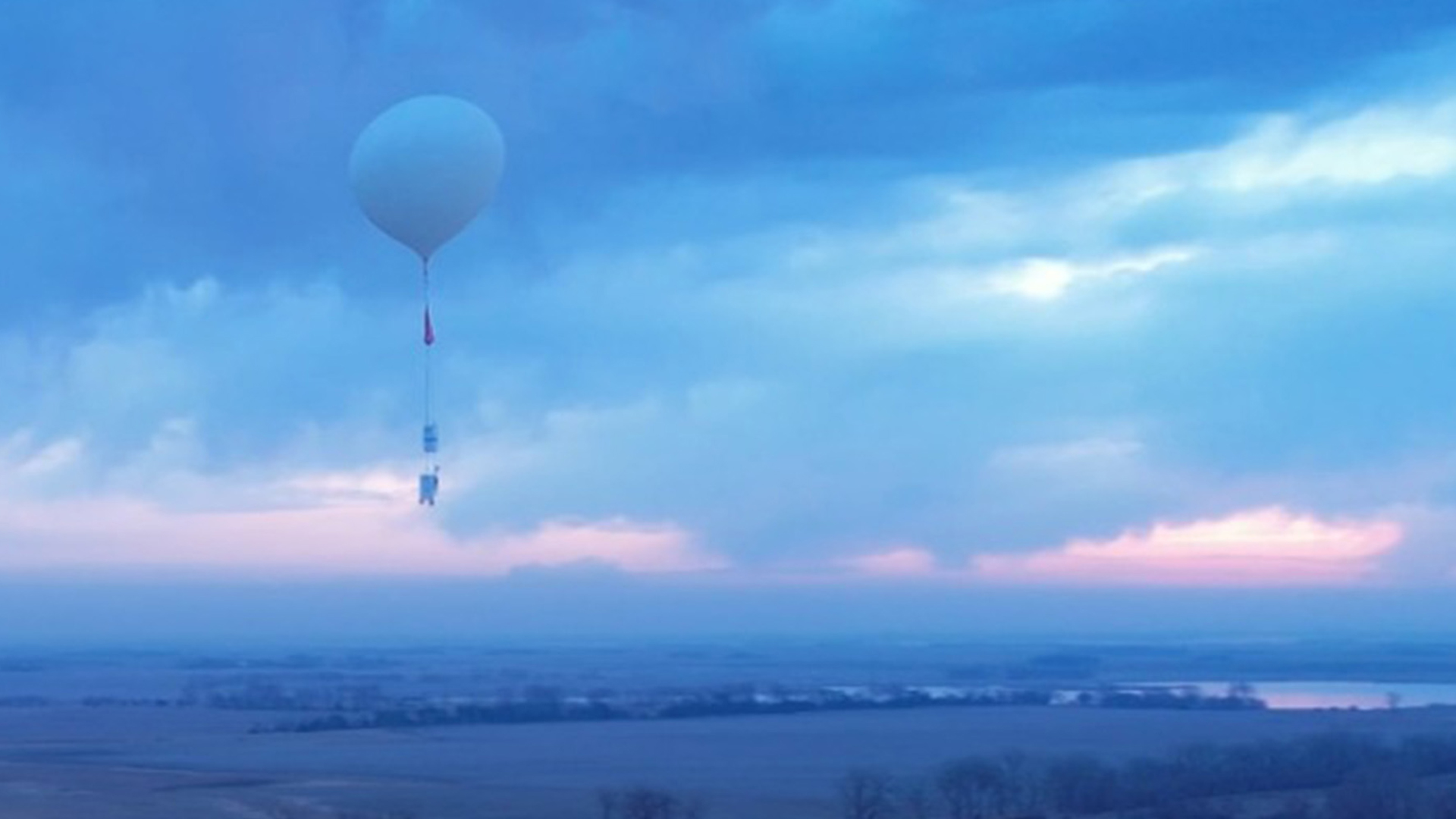
Soaring to new heights: UK tests surveillance balloon that can fly above most military aircraft

Is it a bird? Is it a plane? No, it's a military intelligence balloon!
Eagle-eyed spotters in the US may have spied the UK's new high-altitude balloons being tested, as part of a trial to help the Armed Forces gather intelligence and aid surveillance and reconnaissance.
The balloons, which operate between 60,000 and 80,000ft above the Earth, higher than most military aircraft, will also offer a low-cost communications option.
Defence Procurement Minister Maria Eagle said this latest piece of equipment would give the British military "the edge".
"Stratospheric technology like this could transform how we operate in complex environments, keeping our people safer and better informed than ever before," Ms Eagle added.
The balloons will be able to travel uninterrupted for over 2,000 nautical miles at extreme altitudes without maintenance.
They were tested during Project Aether, a concept development initiative supported by Defence Equipment & Support (DE&S), in South Dakota.
UK company Voltitude worked with Landguard Systems and Aerostar to coordinate the trials.
Future solutions
In the future, the balloons could provide a fast internet connection to disaster zones or remote areas with no coverage, whilst giving information for weather forecasting and climate research.
The uncrewed aerial vehicles, which a single person can fly, can carry a surveillance module weighing up to 3kg. And with a weather module weighing no more than a robin, the craft can stay aloft for more than five days.
"Defence procurement is making strides in the innovation space and DE&S is looking more at the art of the possible, pushing the boundaries and scoping new technologies," said the head of UK Defence Innovation, Prove and Exploit team, James Gavin.
"These latest trials have been incredibly fruitful and pave the way for more collaborative working with our allies to develop capabilities that will benefit our Armed Forces."
The Ministry of Defence is looking at ways that the British military could use the stratosphere, not only with this balloon, but also with vehicles capable of carrying significantly higher payloads for mission durations of six months and a year.
On the up: military balloons around the world
Military balloons floated to the fore back in 2023, when the US shot down an alleged Chinese spy balloon.
An F-22 Raptor shot down the balloon with an air-to-air missile after it traversed the skies above the United States and Canada for seven days.
Beijing officials claimed it was a civilian weather balloon and said the US overreacted by destroying it.
The US is also interested in exploiting balloons for operational purposes, investing $3.8m in balloon projects between 2020 and 2022, according to Politico.
Washington believes that these balloons could follow and deter hypersonic weapons being created by China and Russia.
Last year, North Korea flew balloons full of rubbish, cigarette butts and manure over the border to South Korea.
Seoul has also ballooned USB sticks full of K-pop into the North.









